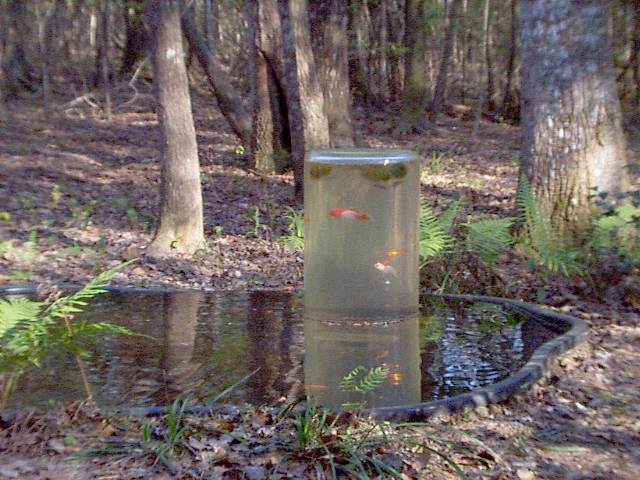

Cool, huh? I've never seen such a thing before I made this one; I came up with the idea myself, and as far as I know nobody else thought of it before. Getting a patent would be useless, though, since once you know the idea you can build it yourself; you don't need to buy anything from me. So, anyone reading this page is welcome to copy the idea shamelessly, although I'd appreciate credit if you publicize it.
CONSTRUCTION
Any container that is closed on one end and strong enough to support the weight of water will work. However, there are a couple of preferences to look for. Obviously, you want the container to be transparent so you can see the fish and they can see you; it would work without being transparent; but you'd have to take my word for it. You also want the glass to be clear and smooth to optimize clarity. Note also that convex glass will magnify your view of your fishies, while any flat glass surfaces will make them appear normal size.
You want the container to be tall. If the open end gets above the surface of the water, it will go "chug" and drain all the water out in a heartbeat. So, you want the open end a few inches under the surface to make sure that waves or fluctuations in water level don't cause it to drain. If you get a tall container, you can submerge a few inches and still have a tall tower standing above the water.
You want the opening on the bottom of the tower (the top of the container as you're likely to be looking at it during purchase!) as large as possible. This not only permits the fishies free access in and out of the tower, but it also encourages convective flow between the water in the tower and the water in the pond. There is no way for oxygen to get into the water in the tower or for pollutants to get out other than by the water itself moving in and out of the tower.You're going to be surprised how difficult it is to find a suitable glass container. I'm watching a horror movie and the mad scientist has somebody's brain in a big glass jar, and I'm looking at the jar! Where did they get that jar? Where can I get one?
The easiest thing to do may be to buy an aquarium, but most aquariums are too short and wide to work well. The hexagonal type may be tall and narrow enough. However, you may find one other problem: The sealing at the corners is designed to keep water in rather than keeping air out. Offhand, I don't expect that there will be a problem, but keep it in mind when selecting an aquarium.
Even if the seals work fine, they may not survive exposure to sunlight well. Most types of plastics and polymers degrade in sunlight, causing drying and cracking and, where seals are concerned, leaking. A small air leak will drop all the water out of the tower in short order. If you choose to use a container in which the sealant is visible from outside, you might be well advised to spend a coupla bucks on a roll of aluminum tape. By applying aluminum tape at the corners, the sealant can be shielded from direct sunlight without significantly blocking the view of the fishies. Fancier installations might involve the use of wooden corner molding, available at any building supply store, applied to all the corners to shade the sealant. Obviously, the nice thing about a solid one-piece glass container is that there are no seals to worry about.
The container in the picture above is a piece of laboratory
equipment, a "beaker" in fact. It's a really big
beaker, 24" tall and 12" in diameter, hence a capacity of over 11
US gallons. It's about 3/8" thick and is clearly labelled
"Pyrex". I hate to even think about how much this thing
costs new, but I got it for a song from a guy who received it as a
gift and was using it as a wastebasket. 11 gallons of water
weighs about 90 pounds plus the weight of the glass itself.
My best suggestion: Do a Google
search for Large Glass Vase.
My fishie tower is set on an arrangement of concrete blocks and bricks sitting on the bottom of the pond. The worst part of this is making sure the glass isn't damaged by the contact with the concrete; it needs something protective on the edge. I have made a protector by cutting a piece of garden hose lengthwise and wrapping it over the edge, but this doesn't work well. A better idea would be to find just the right size plastic bucket or round planter and cut it up to leave just a circular lip for this tower to sit on.
Obviously, you don't want to cut off the fishies' access, so whatever you use for support needs to be more holes than obstruction. Concrete blocks work well, giving the fishies little nooks and crannies to dart in and out of as well as supporting the tower.
One other consideration: winter. I live in northern Florida, and the coldest it gets here results in perhaps 1/4" of ice on the surface of the pond early in the morning. The goldfish swim around under the ice and give me dirty looks. It usually melts by afternoon. It hasn't hurt this Pyrex beaker. If I lived where it gets cold, I'd probably pull this tower down during the winter to make sure ice doesn't break the glass. Of course, if you live where it gets that cold I must presume you are taking measures to protect your fish.
Everyone knows the physics of how such a thing works since it was beaten into their heads in high school, but often are surprised and confused nevertheless when they see it in action this way. So, a quick review: Atmospheric pressure at sea level will support a column of water something like 30 feet high. Hence, as long as the top end of this tower is closed, the vacuum inside will hold the water up. The bottom end is open into the water in the pond, so the fish can come and go as they please.
To expound a little more on the physics: Within a 30-foot column of water, there would be a gradient of pressures starting from atmospheric pressure at the bottom to total vacuum at the top. This variation in pressure looks just like the variation in pressure that divers -- and fish -- experience when they move from shallow water to lower depths. In fact, if one were taking pressure measurements from the bottom of the pond up to the top of the tower, there would be no distinction when the level of the pond surface was passed; it would be one continuous pressure gradient.
Atmospheric pressure really won't hold a column of water 30 feet high because to do so would require a total vacuum at the top of that column. You can't form a total vacuum above water, because the water itself will vaporize or "boil" once it reaches a particular level of vacuum. So, you will get a column of water with a chamber full of water vapor above it, and the height of the column will vary with the temperature since temperature affects the "vapor pressure" of water.
If you're not talking pure water but rather common pond water, the column will actually be even shorter. The water has gasses dissolved in it, notably the oxygen that the poor suffering fish are trying to breathe. A tall column of water will result in high vacuum at the top and will tend to pull the dissolved gasses out, much as the carbonation of a soft drink bubbles out when you lower the pressure in the bottle by removing the cap. The gasses so released will negate the vacuum at the top of the column, lowering the water level a bit. Worse, you have left your fishies with nothing to breathe.
All of that is moot here, though, since we're only gonna support a column of water perhaps 18 inches high, nowhere near high enough to generate a serious amount of vacuum. But don't get carried away and try to build something 20+ feet tall.
Of course, another concern might be the effect of the pressure gradients on the fish. Might they explode when subjected to pressure lower than atmospheric? This is a definite possibility, since one would presume that these fish didn't evolve to endure pressures significantly below atmospheric. However, fish have evolved to be able to move from shallow water to deeper levels and back without consternation, so perhaps moving to yet lower pressures is simply like coming up from the depths for them.
The pressure at the very top of this tower is perhaps comparable to the pressure a fish in a mountain lake might see. We haven't experienced any problems with the goldfish, guppies or mollies we have in this pond, but perhaps other less bulletproof fish might have trouble. Perhaps those goldfish with the puffy eyes will go blind.
Our fish actually seem to love the tower. Sometimes nearly all of the fish in the pond can be found inside the tower. I suspect this may have to do with temperature; the water inside the tower may be expected to react to outdoor weather conditions faster than the water in the pond itself, so when things are warming up the water in the tower is probably warmer than the water anywhere else. In the early morning or late evening, the rising or setting sun shines through the tower but very little into the pond itself, so the fish congregate in the tower to bask in it.
This tower is really hard on frogs. The modus operandii for frogs is to lay at the bottom of a pond until they decide they need air, and then they simply float to the top without moving a muscle. If they happen to float to the top within that tower, their tiny brains don't seem to comprehend that they have not found any air or that they need to change plans. If left alone, they will stay at the top of the tower until dead -- which may take hours or even days, these guys can go a long time without air. If you happen to be there, it's possible to scare the frog into diving for the bottom, and with any luck his next attempt to surface will bring him up outside the tower.
Finally, there is the issue of predators out to eat your goldfish. The first pond we built was made by digging a hole and lining it with an old swimming pool liner, and that episode ended when we got home one day to find a stork standing in the pond. Not only had he eaten all the fish, but he had poked holes in the liner so the pond was ruined.
Any stork trying to nab a fish inside that Pyrex beaker is gonna
bend a beak. The question is: do the fish understand
that? The answer is no, at least not our stupid fish.
When a predator threatens, they dive down out of the tower and try
to hide in the bottom of the pond. The pile of bricks
holding the tower probably does them more good than the tower
itself. Perhaps your fishies are smarter, I dunno. The
tower does seem to have some deterrent effect on swooping
predators -- owls, hawks, etc. -- because they can't figure out
what it is but it appears to be in the way of their swoop.
No such effect on storks, since they simply land next to the pond
and walk over to it and start poking around.
To set up your tower, submerge the entire container in the pond,
allowing the water to fill the container completely. Then
lift the closed end above the surface of the pond, making sure
that the open end never gets above the surface. Support the
container in the raised position, making sure the supports are
strong enough to hold the weight of the container plus the
water. This also means you will need to be lifting
this container plus the amount of water it holds to put it into
position.
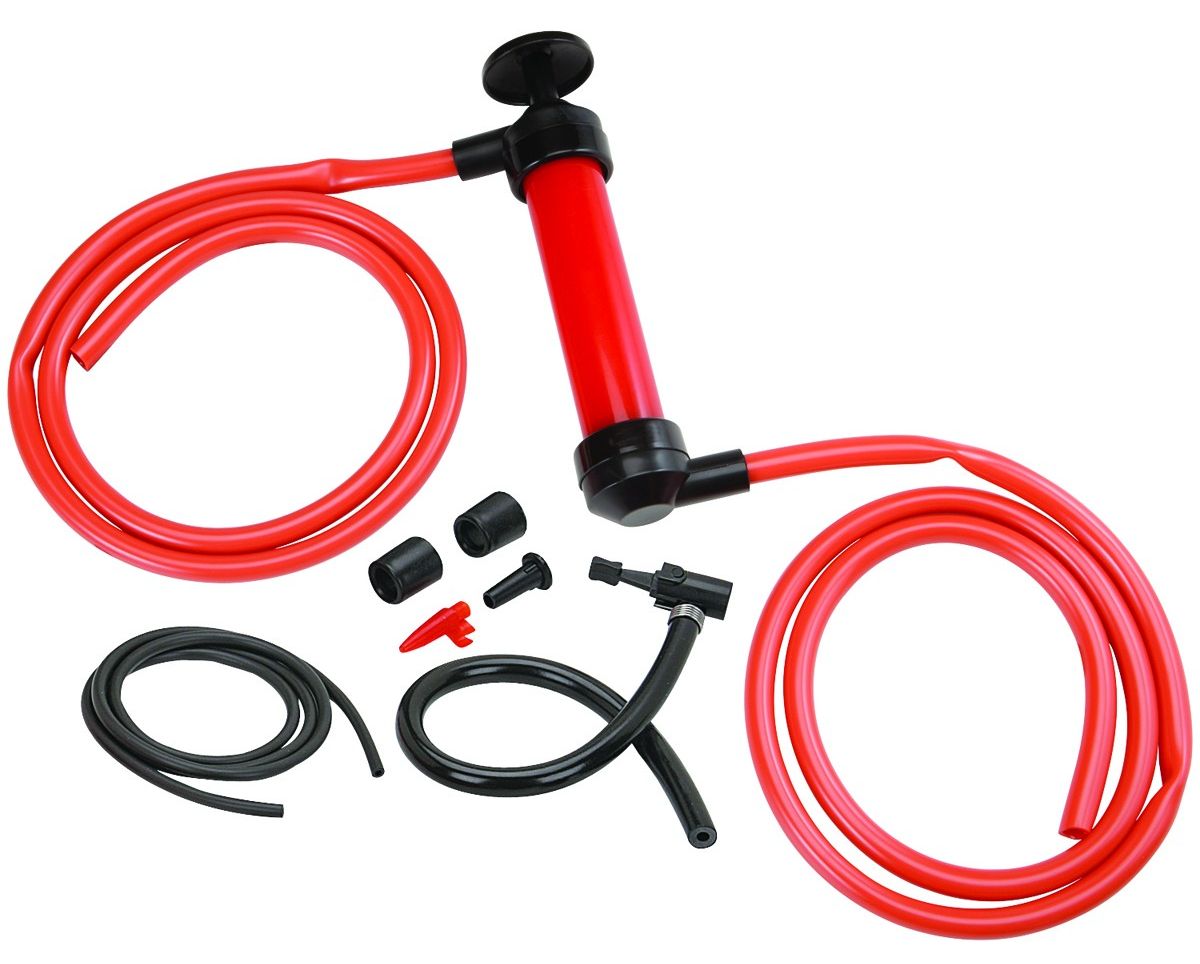
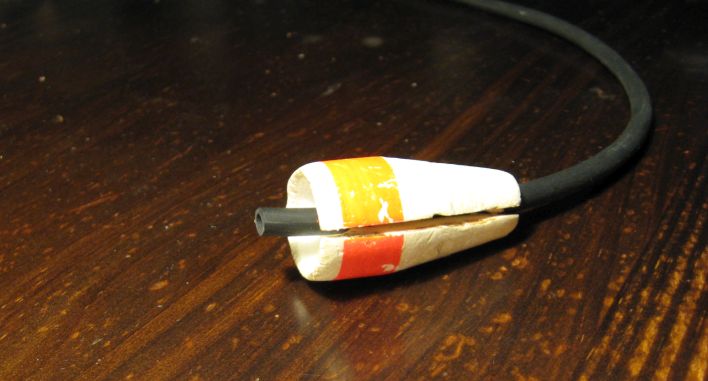
We have three ponds, and considered for some time whether or not we would install fishie hi-rises in the other two. We got a little incentive while sitting on the porch after dark one night; we watched an owl swoop down and make off with one of our fat goldfish. So, we bought a candleholder for $30 and installed it in our 300-gallon circular pond!
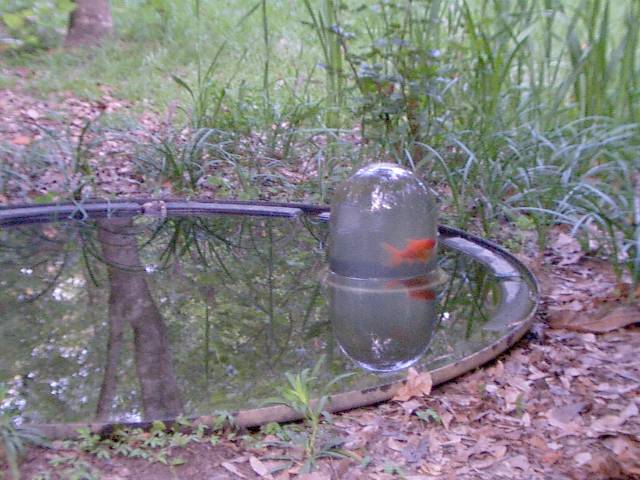
Looks kinda like a bell jar, doesn't it? It's a lot thinner glass, though; if the stork takes a stab at this one, he'll probably break it. It's also considerably smaller than the first hi-rise -- perhaps two gallons -- so it's a snap to lift it out, clean it, and reinstall it.
You think I'm kidding about that candleholder? Here's a picture of the box it came in:
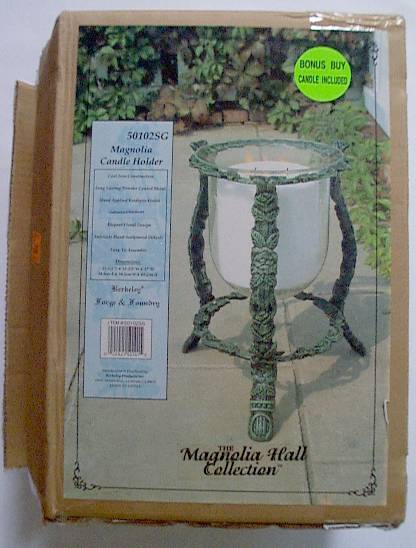
The stand is cast iron with a dark green powder coating assembled with brass screws. So, I just set the stand in the pond and set the glass bowl on it upside down; I made a gasket out of plastic tubing so the glass would be cushioned a bit against the iron. We put the candle itself on a plate and used it on our porch! Note that this pond is deeper than some; if your pond is too shallow, you'd have no choice but to saw the feet off that stand in order to keep the opening in the glass bowl immersed. That's why bricks and blocks work well; you can easily adjust the height.
The third pond is smaller, made from an 80 gallon livestock feeder. Since the pond is smaller, we decided not to support the hi-rise from the bottom, but rather to support it from above and outside the pond. So, a $10 glass vase combined with a $20 wrought iron shepherd's hook intended for hanging plants and a little chain I had laying around resulted in a really cute installation!
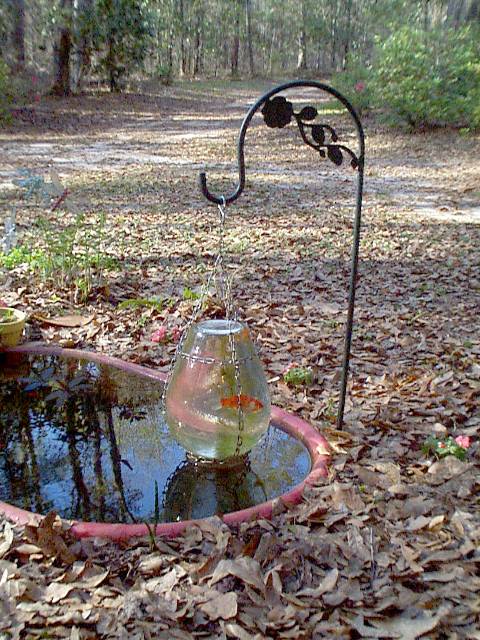
That hook is actually about 7 feet tall, but I've shoved it so far into the soil that the top is only 30" high. The vase full of water is clearly heavier than the potted plants the hook was designed to hold, so it actually bends a little under the stress.
The vase is quite large as vases go, about 14" tall, but it's still very small compared to the original hi-rise -- about 1-1/2 gallon. It's also very thin, like a lightweight drinking glass. But it's clear, it's pretty, and it's cheap; if we break it, we can just buy another. In the meantime, it's really easy to lift out and clean.
Later, the chain started to rust and the shepherd's hook was a little too free to swivel around and bang the vase against the side of the pond. So I dug a little hole around the shaft, clamped a bracket to it, poured in some concrete (had concrete on hand due to paving the driveway!), and filled the hole in after it. Then I replaced the chain with a carefully-crafted netting made of 90-pound-test stainless steel fishing leader cable and stainless steel split rings. A stainless steel hook completed the upgrade, so nothing here will rust again!
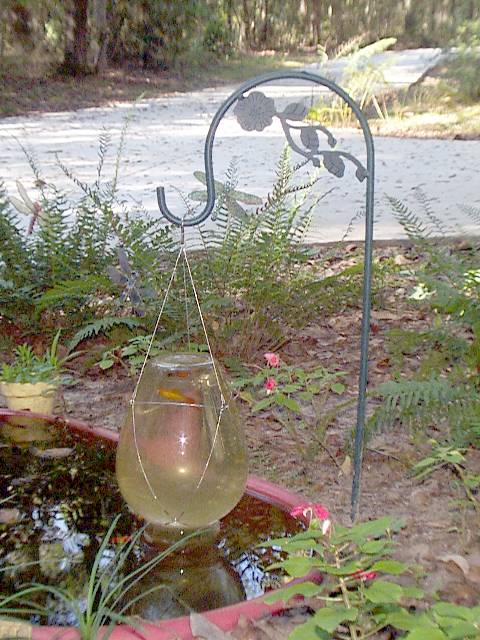
OTHER IDEAS
Set it on the ground: Stand a container on the ground beside the pond, and connect a pipe from it down into the pond. Simple pipe fittings should work, but it all has to be airtight or it'll just drain into the pond. Big pipes would be a plus to help keep the water convecting back and forth to keep it fresh and oxygenated inside the container, as well as making the fishies feel more welcome to enter. They don't need to be transparent; the fish can disappear into one end and come out the other. Disassembling and cleaning might take some careful planning.
Fishie Bridge: There's no reason a U-shaped pipe wouldn't work the same way that a simple container does; you can keep the two ends immersed and the loop can stand above the water, and the fish can go up one side and down the other. Then note that the idea would still work if the two ends were immersed in different ponds.
So: you could install two ponds right next to each other, and then make a U-shaped container out of some PVC pipe and elbows -- say, 6" diameter stuff. Installing this fishie bridge would be tricky without the transfer pump shown above, but with the pump it'd be easy enough: Just set the bridge in place, insert the floating tube in either end -- whichever end is higher if it's not level -- and start pumping.
PVC pipe comes in Schedule 40 for pressure applications and thinner DWV (Drain/Waste/Vent) for nonpressurized (sewer) applications. The DWV will work fine for this job and will be easier to find in the larger sizes you need.
Of course, you won't be able to see the fish inside the PVC
pipe. If that really bothers you, note that you can buy
clear PVC pipe. However, when you find out how much clear
PVC pipe costs, I'll bet you decide to allow your fish that much
privacy. If you can find glass pipe it might be cheaper!
PVC pipe, like other plastics, doesn't like sunlight. So, plan on replacing that pipe and elbows every few years. Or, make the whole thing out of cast iron pipe! Actually, fiberglass or terra cotta pipe might work well if you can get a loop sealed well enough.
Note: as soon as this fishie bridge is in place, the water in the two ponds will be at the same level. Guaranteed. Don't try to set up a split-level pond arrangement with this idea, because the water in the upper level will drain into the lower level just as fast as it can flow through that pipe, lowering the upper level and overflowing the lower level. It'll keep flowing water until either the two levels are the same or the loop sucks air.
After posting this page, I discovered that such a fishie bridge
had already been invented. It was called the Aqua
Span. It was rectangular, made the way an aquarium is with
pieces of flat plate glass assembled with sealant. It was
evidently intended for joining adjacent indoor aquariums.
However, a Google search no longer turns up any hits, so
apparently it's no longer on the market.
People Hi-Rise: If you can find a glass container
big enough and a way to support it, you might be able to provide a
similar contraption in your swimming pool for people to swim up
into, or at least stick their heads up into to look around.
However, I cannot emphasize enough just how dangerous such an
installation would be. We human beings have more in common
with those frogs than with the fish, and we can't hold our breath
as long as the frogs! There is no way I'd allow children
around such an installation without supervision, since it would be
only too easy for them to get up inside such a container, panic,
and drown.